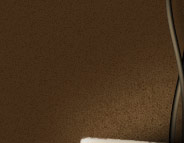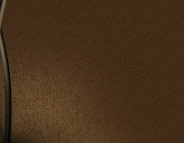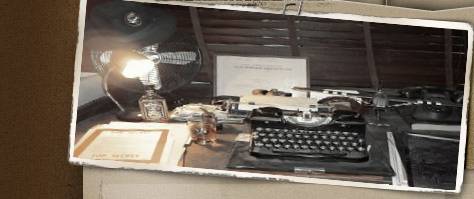|

File No.: Battle Relic # 33
Title: "World War Two US
Paratrooper Helmet found on Dutch
scrap yard"
Investigation made at: The
Netherlands
Period Covered: 17SEP1944 -
17JAN2023
Date: 19FEB2023
GPS Location: N/A
Case Classification:
Description of a World War Two
US Army M1 Steel Helmet
Case Status: Case Closed |
(click to enlarge)
 |
REASON FOR INVESTIGATION:
On 7JAN2023 this agency received a
message through the contact form of
its website from a Dutch man telling
that he had found "a para helmet
of the 82 airborne 504 pir". The
helmet surfaced at a metal scrap
yard near Nijmegen and it is in a
perfect condition. The sender then
asked if we were interested to see
the battle relic.
After contacting the owner, whose
identity will remain undisclosed
here, he kindly invited us to come
and see this remarkable item. |
SYNOPSIS:
The owner had attached several
photos of the helmet to his
invitation to show the helmet.
|
|
(click to enlarge)
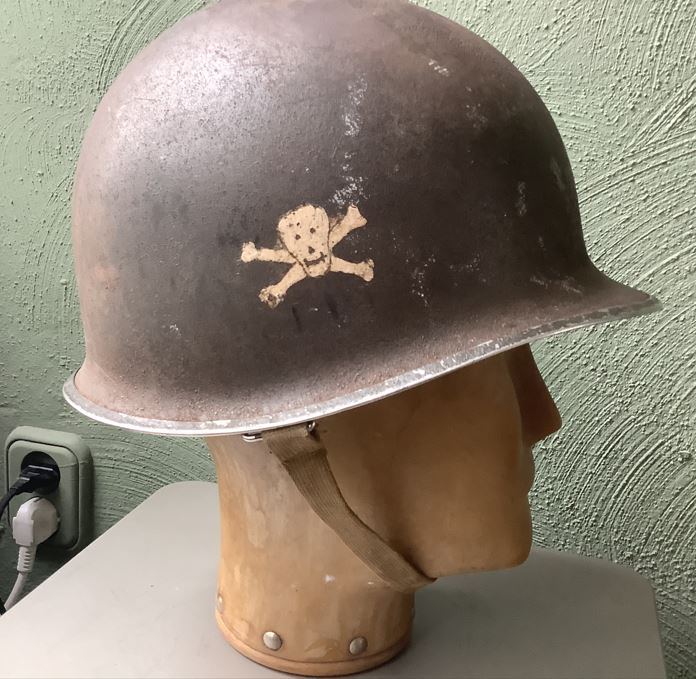
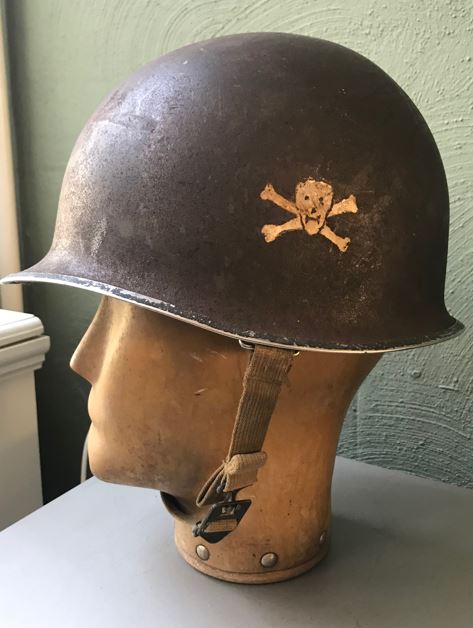
The helmet found on a scrap heap
of a metal recycling firm in
the South of the Netherlands |
During our visit the owner stated
that he works at a local metal
recycling business. In 2020 he
discovered an American M1 military
helmet in a cart/bin with discarded
metal objects that had been brought
in. He then removed the helmet from
the bin because otherwise it would
have been crushed and recycled for
its scrap metal value. He recognized
it as a war-time model from the
front seam in the helmet's rim and
the fixed bale chinstrap
attachments. The symbol on the steel
helmet’s sides are from Headquarters
of the 504th Parachute Infantry
Regiment. On a photograph taken on
Oranjesingel in Nijmegen shortly
after the Regiment’s heroic Waal
river crossing in late September
1944, an American paratrooper can be
seen without a helmet. "Would this
helmet be the one missing in the
picture?", the owner asked himself.
The owner has posted images of the
helmet on a Facebook-page about
American helmets and received
several rather negative reactions
and comments. He was accused of
committing fraud with members even
contemptuously remarking that the
helmet must have been kept in an
airtight preservation container for
over 76 years and was cordially
advised to read more books. This
agency visited the owner on
17JAN2023 and was allowed to hold
and behold the helmet, take
photographs and write this Battle
Relic #33 article about it.
|
Description of the Helmet
Like all American M1 helmets
this one is part of a combination of
two "one-size-fits-all" helmets: an
outer metal shell and a hard
hat–type liner nestled inside it
with an adjustable suspension
system. The outer shell should not
be worn by itself.
The weight of a World War Two–era M1
helmet is approximately 2.85 pounds
(1.29 kilograms), including the
liner and chinstrap. |
Steel outer shell
In this particular helmet a factory
number is stamped inside and the
owner has recognized a figure 6 in
it. In order to be able to read the
other figures he would have to use
destructive methods such as a
scouring pad or sand paper and he
decided not to do this. It is of the
"fixed bale" type which means that
the U-shaped rods to attach the
chinstraps on are welded to the
steel "pot" and cannot be moved.
Later on in World War Two chin strap
rods that could be moved or
swiveled, hence "swivel bales", were
introduced, making this an early war
helmet. The pot also features a seam
at the front of the helmet where the
rim's ends meet typical of US
helmets in World War Two.
|
|
(click to enlarge)
.JPG)
.JPG)
.JPG) |
|
On both sides are symbols painted in
white of a human skull above two
crossed bones. It looks as if some
details, such as the outlines of the
skull and its facial features have
been scratched in the paint after it
had dried. It is unmistakably the
tactical sign of Headquarters of the
504th Parachute Infantry Regiment
attached to the 82nd Airborne
Division during Operation "Market
Garden" in the Netherlands in
September 1944. |
|
(click to enlarge)
_small.JPG)

_small.JPG) |
Liner
To complete the helmet, the owner
bought a Westinghouse helmet liner
from the Dutch "Marktplaats" website.
He added A-yokes on the liner using
pop rivets which he put through the
liner’s wall. The liner is not an
original part of the battle relic
found in the scrap yard and will not
be shown here.
|
|
Investigative leads |
|
The units, regiments and battalions,
that were part of or attached to the
82nd Airborne Division, like the
ones of its sister division the
101st Airborne, used tactical
symbols on the sides of the helmets
worn by its troopers. This was done
for tactical purposes. Airborne
units typically get spread out after
landing or being dropped behind
enemy lines and unit symbols make it
easier to regroup LGOP's (Little
Groups of Paratroopers) into combat
effective formations. |
|
(click to enlarge)
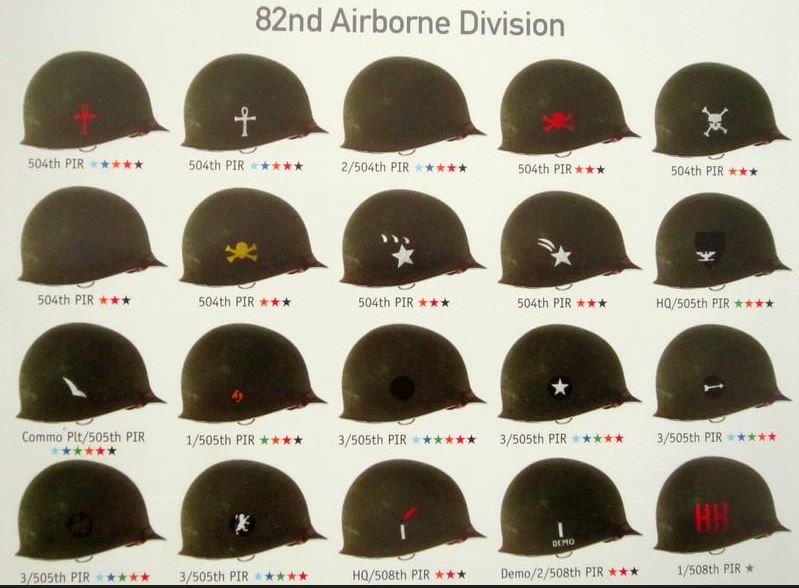
Fig.: Helmet
markings of the 82nd Airborne
Division
during World War Two |
Color code of tactical helmet
symbols
The 504th Parachute Infantry
Regiment used the symbol of the
skull and crossbones with a
white
version for Regimental Headquarters
as featured in this Battle Relic
article.
|
|
The excellent book "Paratrooper
Helmets" by Michel DeTrez (ISBN
9782352501411) and the website of
our best friends at
Paratrooper Research Team
show
several other war-time helmets, and
liners, worn by members of the 504th
PIR with their distinctive
pirate-like markings: |
|
(click to enlarge)
  |
|
Of interest is the fact that DeTrez
noted that the 504th Parachute
Infantry also used other
tactical helmet symbols and that:
"Besides the Ankh, two other symbols
are also seen on period photographs
showing paratroopers from the 504th
PIR: "skull and crossbones", and
"shooting star". The skull and
crossbones motif is seen in red,
blue, white and yellow. Yet, we
remain unsure as to which battalion
the color represents or if it even
represents a battalion". - Page
89 -
On
18FEB2022 a well-respected Dutch
expert on the subject of Battle
Relics from the Area of Operations
of the 82nd Airborne Division who
has found countless items from this
unit and also helmets belonging to
members of the 504th explained the
color codes for the battalions in
the Regiment:
"Yellow
is 3rd Battalion,
Blue
2nd
Red 1st"
Asked how he knows this, he wrote: "All
identified 3rd Battalion helmets I
and other people have found had
yellow skulls on them", "It
is correct [what DeTrez wrote].
The Ankh [symbol] was seen
in Italy in various colors. It is
the 2nd Battalion. The star
[symbol] was used by all three
[battalions]", "By the way, these
helmets [on the
pararesearchteam website] are
all mine. All three with
yellow [symbols] are from "I"
Company and the red one from a 1st
Battalion casualty from Cheneux
[in the Ardennes]." |
Likelihood of identifying
previous and subsequent owners
Battle Relics that can be traced to
a specific unit have a certain
attraction and almost scream to have
their history researched; their
provenance in detective jargon.
Who was the original owner? Where
was the item worn? What would this
silent witness tell us if it could
speak?
Tracing back the helmet to the
person who threw it away to be
scrapped is impossible as the
current owner explained us. There is
no record tracing back the origin of
the batch of scrap metal with the
helmet in it.
This blocks a lot of potential
leads. The helmet has the markings
of a PARACHUTE Infantry Regiment.
The chinstraps aren't of the M2
paratrooper version which would
feature longer straps with snap
buttons for attaching the steel pot
to the liner. This raises the
questions if the owner was a
qualified jumper or perhaps a
replacement attached to the 504th
after a previous campaign of the
unit. Or perhaps had a jump
qualified veteran lost his helmet
before the Holland operation and
received this regular M1 helmet as a
replacement. We know from experience
that it is very well possible to
jump from a C-47 on a Drop Zone of
the 82nd Airborne Division of the
Holland campaign wearing a regular
M1 helmet with a paratrooper liner
inside, because we did this on
16SEP2022 in Groesbeek:
|
|
(click to enlarge)
.JPG)

Fig.: Battle
Detective jumping (1st jumper on
left photo) from C-47 "Pegasus"
on Drop Zone "Nan" near Groesbeek on
16SEP2022
wearing a standard M1 steel helmet
with paratrooper liner. |
|
The original owner therefore could
have been a jumper, a non-jumper, a
replacement and a veteran of
previous campaigns. The fact that
the helmet bears no other
distinctive markings makes
identifying the original owner even
more challenging. There is neither a
rank device or marking at the front
nor an NCO or Officer's bar painted
on the back of the helmet. With the
working hypothesis that the helmet
therefore belonged to a "buck"
Private or a Private First Class, we
checked the
504th Parachute Infantry Regiment
Roster of Regimental Headquarters
(RHQ) Company (Partial) on the
gigantic and complete
ww2-airborne.us website about US
Airborne units in World War Two. |
|
We discovered that the roster of RHQ
has 184 members of which 144 with
the rank of PVT, PFC or no rank
listed. Of this selection 10 were
KIA, MIA, DOW, DODY in Anzio, Sicily
and/or Italy; campaigns prior to
Operation "Market Garden". This
still leaves 134 potential
candidates for being the original
owner of the helmet. |
Photograph of paratroopers of the
504th Parachute Infantry Regiment in
Nijmegen
On September 22nd 1944 men of the
504th Parachute Infantry Regiment (PIR)
are photographed while they march
back from the bridgehead north of
the Waal River and pass the area
where the 2nd Battalion of the 505th PIR fought for the south side of the
bridge two days earlier. The second
paratrooper from the right is reputed to be Sgt.
Ross S. Carter of "C" Company,
504th, who wrote the book "Those
Devils in Baggy Pants" after World
War Two. It became a best-seller.
The photo was taken by T/5 Poznac,
whom we know from the
Battle
Study # 15 article, on
Oranjesingel. It is the very spot
where two days before Pvt. Harold E.
Peterman of "F" Company,
505th, was killed. Three Dutch women
stand at his field grave in the
background. |
|
(click to enlarge)


Source: Page 597
of Peter Hendrikx and Michel Detrez
books
"Burning Bridges" and "Bridges are ours"; ISBN 978-2-9540297-2-6 |
|
(click to enlarge)
 |
|
The well-known photograph of
paratroopers of the 504th marching
down Oranjesingel in Nijmegen
showing a bare-headed "All American"
soldier, hardly renders new clues
but is definitely a great
conversation piece.
Note also the letters "PAT", "RAPP"
and the number 13 scribbled on the
jeep's fuel can at left. It is our
theory that the man behind the wheel
is T/5 Poznac. He wears the same
goggles on his helmet as Poznac in
the photo in Battle Study #15,
and the jeep belongs to 82nd
Airborne Division Special Troops (
The "X" Marking on the left bumper)
which makes it likely that a Signal
Corps photographer could have made
use of a motor pool vehicle. |
|
(click to enlarge)
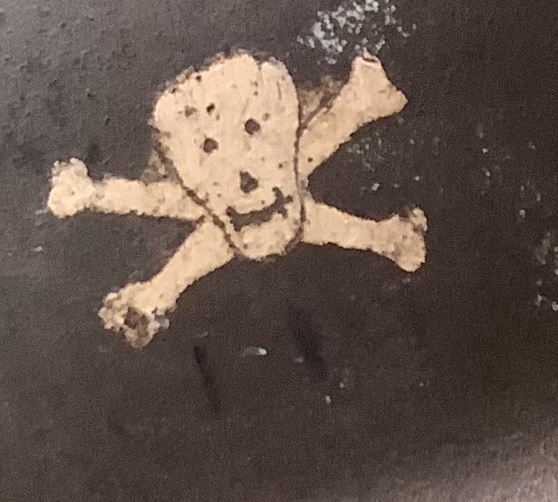 |
Also of interest are three black
vertical black stripes under the
skull and crossbones on one side of
the helmet.
Are these checkmarks made by the
wearer to indicate achievements such
as combat jumps or confirmed kills?
Readers are encouraged to contact
this agency for their thoughts or to
share facts about these and other
distinctive features of this Battle
Relic. |
Exhibits:
We are very thankful to the current
owner of the helmet and consider it
a privilege to describe and display
it here as Battle Relic #33. |
|
(click to enlarge)
.JPG) 1) 1)
.JPG) 2) 2)
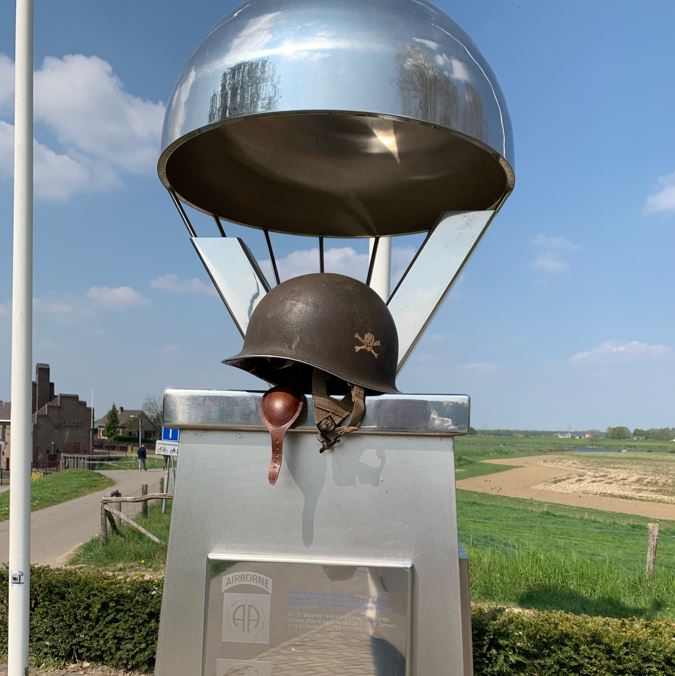 3) 3)
1)
The helmet and photograph of
paratroopers of the 504th Parachute
Infantry Regiment in Nijmegen
22SEP1944
2) Right side of the helmet
3) The helmet placed on the
Thompson Bridge monument at Grave
close to the Drop Zone of the 504th
(Photo by the owner of the battle
relic) |
|
CONCLUSION:
Over the years personnel of this
agency have held other examples of
World War Two era American steel
helmets with tactical markings
painted on them. For a recent
example please read the
Battle
Relic #31 article.
We have met the current owner in
person. We found no motive on his
part or indications of post-war
alterations of the helmet. We have
no reasons at all to doubt the
originality of this American M1
steel helmet shell and the fact that
it belonged to a member of
Regimental Headquarters Company of
the 504th Parachute Infantry
Regiment in World War Two. We
consider it a genuine discovery and
a true Battle Relic. |
|
 |
|
Back to Battlerelics
 |
|
|
